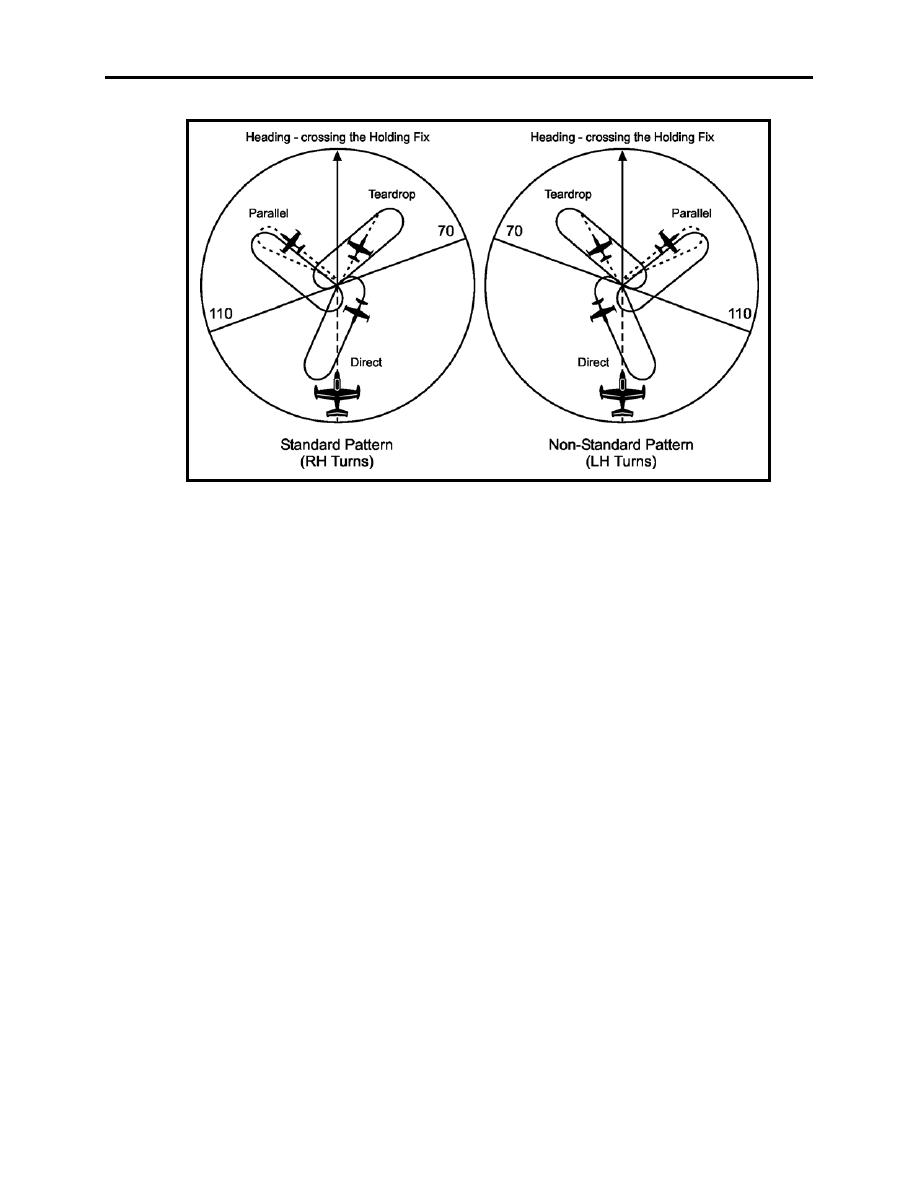 |
|||
|
|
|||
|
Page Title:
Figure 3-9 Holding Entry Procedures |
|
||
| ||||||||||
|
|  CHAPTER THREE
RADIO INSTRUMENTS
Figure 3-9 Holding Entry Procedures
The holding entry turn will place the aircraft either outside the depicted holding pattern (Parallel
entry), or within the pattern area (Teardrop or Direct). Care must be taken to ensure a proper
track over the ground during Parallel entries. This is because there is limited protected space on
the non-holding side of the radial. On Direct and Teardrop entries, the student should alter
heading as necessary to position the aircraft at a distance from the holding radial equal to the
aircraft's turn radius (2 miles for 180 turn at 200 KTAS, no-wind). This requires calculation of
radial width at the turnpoint DME. For example, if the turnpoint was at 60 DME and there was
no wind, the aircraft should be offset by a two-radial width to make a SRT to rejoin the holding
radial.
The aircraft is considered to be "established in holding" upon initially crossing the holding fix.
At this point, a mandatory call to ATC is made containing the following information: "aircraft
name, position, time, altitude". There is no FAA-published definition of "one turn in holding" or
"two turns in holding". Consequently, requests for practice holding most often result in a
holding clearance with an EFC.
HOLDING PATTERN WIND CORRECTIONS
Under no-wind conditions, the aircraft track over the ground would be a symmetrical race- track
pattern. In reality, however winds aloft will always be a factor when holding. The student
should compensate for wind in order to arrive at an outbound location from which a turn inbound
will place the aircraft on the holding course. This may be accomplished by flying a crab angle
into the wind on the outbound leg. On consecutive laps, a drift correction should be utilized on
the outbound leg that is roughly double, the crab required to maintain the holding radial. Using
Figure 3-10 as an example, a 30 angle of bank turn at the fix would put the aircraft well inside
3-34
RADIO INSTRUMENTS
|
|
Privacy Statement - Press Release - Copyright Information. - Contact Us |